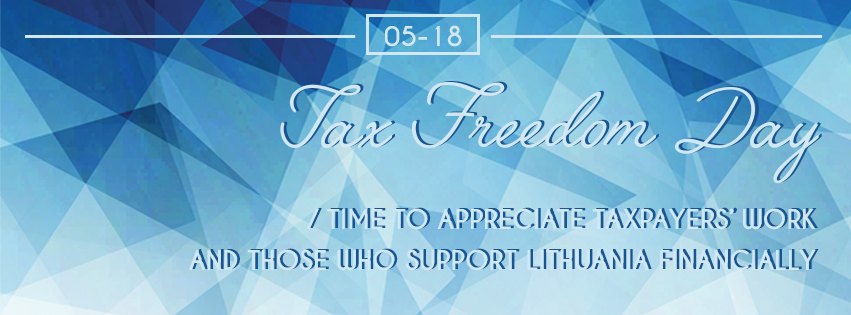Tax Freedom Day comes four days later, on May 18th. It is a symbolic day in the year when an average taxpayer has paid all the dues to the government and begins to work for him- or herself.
The fact that the Tax Freedom Day comes later means that government expenditures has grown more than the country’s economy. According to the Lithuanian Free Market Institute, this year people in Lithuania have worked on average 139 days to “earn” the money they pay in taxes, as compared with 135 days in 2015.
“The symbolic Tax Freedom Day is the time to appreciate taxpayers’ work and those who support the country financially. This day is meant to express respect to the taxpayer, to draw attention to the amount of money that we pay in taxes and to the way it is spent. The Tax Freedom Day is a reminder to the government that it should be more responsible with taxpayers’ money,” – LFMI president Žilvinas Šilėnas says.
This year all public sector expenses have amounted to EUR 4,335 per capita, which is an increase of EUR 317 from 2015. Total public expenditure (excluding EU funds) will amount to EUR 12,581 mln, up by EUR 783 mln. from last year.
“Every wage-earner who earns EUR 500 after-tax and spends them pays about EUR 5,026 in taxes per year. If you earn EUR 1, 000, you will pay almost 11,000 EUR. This is a large sum of money, and taxpayers should remember that government services are not given for free. The taxpayer has paid for all the services, from pavement blocks to medical insurance, and paid quite some money,” – Žilvinas Šilėnas says.
The Tax Freedom Day tells us how much an average statistical person pays in taxes. For a working person it comes later. For example, if a person earns an average take-home wage of EUR 585 , he or she will start to work for him- or herself only in July.
Visit LFMI’s tax calculator at www.mokumokescius.lt.



